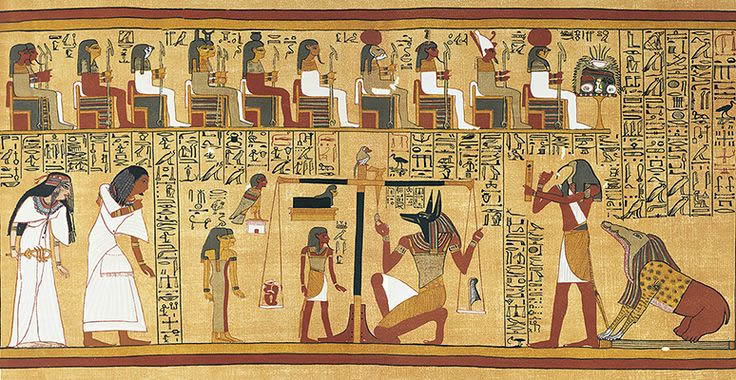 |
| Book of the Dead |
The Egyptian Book of the Dead is a collection of texts that were used to accompany the souls of corpses into the afterlife and assist them in finding a satisfactory resting place. It should be distinguished from the Tibetan Book of the Dead
The Egyptians were the first people to conceive of an afterlife in which human souls were judged on a primarily moralistic basis rather than on the basis of adherence to some particular religious dogma, which was more common in later peoples.
In Egyptian belief the soul progresses into the presence of the god of the dead, Osiris, when its heart is measured against the scales of truth (maat). If found wanting, the Eater of the Dead (Am-mut) awaits; if found to be virtuous, then the soul enters a place where eternal bliss awaits.
Both coffin texts and pyramid texts were used to assist the soul to reach the court of Osiris and to pass through the truth-testing process. These texts might be inscribed onto stone in the tomb or sarcophagus, painted onto coffins, or else written onto papyrus to accompany the corpse.
A total of some 200 different verses or chapters of this sort have been discovered and have been combined to make the Book of the Dead. However, no individual cache of texts has been found that contains all of the verses, and Egyptian thinkers conceived of no official canon of the Book of the Dead.
Instead, individual bodies were accompanied by personalized selections of texts determined on a case-by-case basis. Sufficiently wealthy or powerful individuals could have new verses or spells written for their particular use, while others made do with existing texts.
Pyramid writings were the first of these texts and are most notably found at Saqqarah, where they were created in approximately 2400 b.c.e. The first pharaoh to receive these texts was Unas, who was the last king of the Fifth Dynasty.
The texts included hymns of praise, magical spells, and invocations of various sorts to assist the dead king. They also include valuable historic records, including a battle scene against the Bedouins, trade with Syria and Phoenicia, and the transportation of granite blocks to help build the pyramids.
Subsequent pyramid texts also combine religious beliefs with what are presumed to be contemporaneous historical beliefs. Coffin texts were painted onto coffins and are first recorded during the First Intermediate Period (c. 2130–1939 b.c.e.).
They are similar in nature to pyramid texts but denote a widening of the possibilities of obtaining access to the afterlife to more social classes. Texts generally were combinations of hieroglyphics representing spells and other uses of language and illustrations.
Pyramid texts most commonly featured praise for the sun god Ra, while coffin texts generally favored Osiris. The concept of the field of reeds was also subsequently introduced; in which the soul that was granted continued happy life would be expected to labor on agricultural tasks for eternity.
This in turn led to the creation of magical ushabtis, which were small statuettes that were enchanted, it was hoped, so that they would come to life and take responsibility for this labor, leaving the soul to enjoy an eternity of ease.
The belief was that the soul could be alive within the burial chamber while still laboring in the field of reeds and also touring the heavens in the company of the gods. It was considered possible for these multiple forms of reality to be experienced at the same time.
